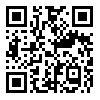Volume 6, Issue 3 (Fall 2019)
jhbmi 2019, 6(3): 163-177 |
Back to browse issues page
Sajad Samadi Avansar 

 , Zahra Niazkhani
, Zahra Niazkhani 

 , Fardin Mirza Tolouei
, Fardin Mirza Tolouei 

 , Ahmad Reza Afshar
, Ahmad Reza Afshar 

 , Habibollah Pirnejad *
, Habibollah Pirnejad * 




 , Zahra Niazkhani
, Zahra Niazkhani 

 , Fardin Mirza Tolouei
, Fardin Mirza Tolouei 

 , Ahmad Reza Afshar
, Ahmad Reza Afshar 

 , Habibollah Pirnejad *
, Habibollah Pirnejad * 


Ph.D. in Medical Informatics, Associate Professor, Patient Safety Research Center, Urmia University of Medical Sciences, Urmia, Iran
Abstract: (4872 Views)
Introduction: Arthroplasty is a major orthopedic operation with an increasing rate. The success of this operation can significantly reduce patients’ pain and disabilities. This study aimed to design a registry system for hip and knee arthroplasties.
Method: A comprehensive search was conducted to retrieve minimum data set from articles, guidelines, forms and reports published by orthopedic societies. Then, orthopedists were interviewed and medical records were evaluated for system requirements. After thematic analysis of the qualitative data, the intended system’ requirements were extracted. A system was designed following the "Information System Development Life Cycle and Object-Oriented" approach. The system prototype was developed by Python programming language and PostgreSQL Data Base Management System. Then, the usability of the system and user satisfaction were tested. Quantitative data were analyzed using descriptive statistics and through thematic and quantitative approaches.
Results: The required dataset and processes were extracted based on evaluating nine arthroplasty registries of pioneer countries as well as our local needs and requirements. The result was a minimum dataset comprising of 39 elements in 5 groups. They were used for developing the arthroplasty registry forms for hip and knee. The system was considered applicable and useful by potential users.
Conclusion: An arthroplasty registry system was developed successfully. This system can provide a ground base for healthcare policymakers as well as the members of orthopedic society for planning a good quality care for arthroplasties.
Method: A comprehensive search was conducted to retrieve minimum data set from articles, guidelines, forms and reports published by orthopedic societies. Then, orthopedists were interviewed and medical records were evaluated for system requirements. After thematic analysis of the qualitative data, the intended system’ requirements were extracted. A system was designed following the "Information System Development Life Cycle and Object-Oriented" approach. The system prototype was developed by Python programming language and PostgreSQL Data Base Management System. Then, the usability of the system and user satisfaction were tested. Quantitative data were analyzed using descriptive statistics and through thematic and quantitative approaches.
Results: The required dataset and processes were extracted based on evaluating nine arthroplasty registries of pioneer countries as well as our local needs and requirements. The result was a minimum dataset comprising of 39 elements in 5 groups. They were used for developing the arthroplasty registry forms for hip and knee. The system was considered applicable and useful by potential users.
Conclusion: An arthroplasty registry system was developed successfully. This system can provide a ground base for healthcare policymakers as well as the members of orthopedic society for planning a good quality care for arthroplasties.
Keywords: Arthroplasty, Registry, Hip Arthroplasty, Knee Arthroplasty, Orthopedics Operation, Information Technology
eprint link: http://eprints.kmu.ac.ir/id/eprint/32274
eprint link: http://eprints.kmu.ac.ir/id/eprint/32274
Type of Study: Original Article |
Subject:
Health Information Systems
Received: 2018/08/31 | Accepted: 2019/07/15
Received: 2018/08/31 | Accepted: 2019/07/15
| Rights and permissions | |
 |
This work is licensed under a Creative Commons Attribution-NonCommercial 4.0 International License. |
